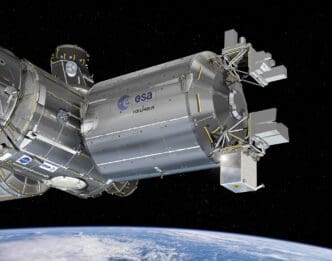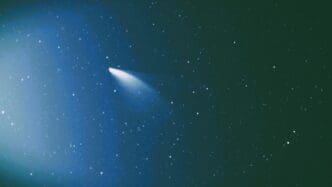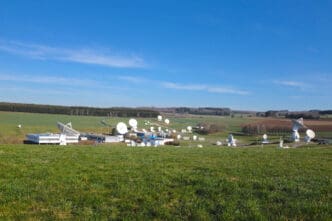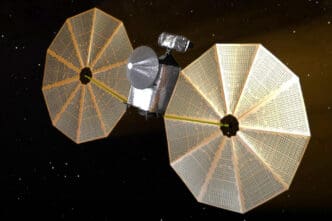Have you ever wondered what the universe hides in its vastness? Recently, the Hubble Space Telescope uncovered a cosmic event that’s bound to capture imaginations. It’s a supernova, located in the Gemini constellation, about 600 million light-years away. Discovered nearly two months after it appeared, this supernova continues to amaze.
The Hubble Telescope, famous for its breathtaking images of space, has once again gifted us a sight that’s as educational as it is mesmerizing. SN 2022aajn, the name of this stellar explosion, stands out as a beacon in its galaxy. Why is this supernova special, and what can it teach us about the universe? Let’s dive into this stellar spectacle.
The Science Behind Supernovae
What makes a supernova like SN 2022aajn so interesting? It’s classified as a Type Ia supernova, a kind that occurs from the explosion of a white dwarf star. These supernovae are cosmic yardsticks, helping scientists measure astronomical distances with precision. By comparing their intrinsic brightness to how they appear from Earth, researchers can calculate vast distances.
However, measuring isn’t straightforward. Cosmic dust can interfere, making supernovae appear dimmer and redder. This requires astronomers to meticulously analyze data across various wavelengths to correct for dust’s trickery. Through these meticulous observations, Hubble aids in refining our understanding of far-flung galaxies.
Hubble’s Techniques in Action
Hubble isn’t just a pretty picture machine; it’s a tool of precision. Using four infrared wavelengths, it peeks through cosmic dust more effectively than visible light. The telescope captures nuances that are otherwise missed, making it indispensable in astronomy.
The importance of this process can’t be overstated. Observing in infrared allows astronomers to focus on supernova data without interference from cosmic clutter. These insights are crucial for accurate measurements.
Hubble’s prowess here is remarkable. By comparing light in different wavelengths, it untangles the complexity dust introduces. This process helps clarify our understanding of supernovae’s true nature.
Distance Measuring and Challenges
Type Ia supernovae, like SN 2022aajn, serve as cosmic milestones. Their consistent brightness makes them reliable distance indicators. But how do scientists tackle the challenges involved?
Cosmic dust complicates distance measurement by altering light’s appearance. To address this, astronomers compare brightness across wavelengths—a task that demands precision. Hubble’s observations are vital in overcoming these hurdles.
Understanding this complexity is key. Hubble’s data informs how light dims and reddens due to distance or dust, pivotal for accurate cosmic measurements.
Astronomy Beyond the Visible
While visible light reveals much, it’s just part of the story. Astronomers rely on a spectrum of wavelengths to gain a full understanding of space phenomena.
Hubble’s capability of spanning ultraviolet to near-infrared is significant. This range allows a comprehensive analysis of supernovae like SN 2022aajn.
The results? A clearer picture of how galaxies form and evolve, aided by the detailed observations of Hubble.
Hubble and Its Impact
Hubble’s technology transcends typical telescopic capabilities. Its impact on understanding cosmic phenomena cannot be underestimated.
Observations like those of SN 2022aajn offer invaluable insights. They expand knowledge about the universe, enriching our comprehension of cosmic events.
Each discovery contributes to a larger picture—a universe that’s more interconnected than it seems.
A Journey Through Space
Hubble’s continuous exploration relays tales of distant galaxies, each a chapter in the universe’s story.
Through its lens, we glimpse the cosmic dance of stars and galaxies, with supernovae like SN 2022aajn acting as spectacular high points.
Unraveling Cosmic Mysteries
Why does Hubble focus on supernovae like SN 2022aajn? Each offers a unique insight into cosmic processes.
These observations are vital for understanding the life cycles of stars and the reasons for their explosive ends.
With each discovery, we chip away at the mysteries of the universe, one supernova at a time.
The cosmos is a vast tapestry, with supernovae like SN 2022aajn adding vibrant strokes. Thanks to Hubble, our understanding of these cosmic fireworks deepens, paving the way for future astronomical insights.







